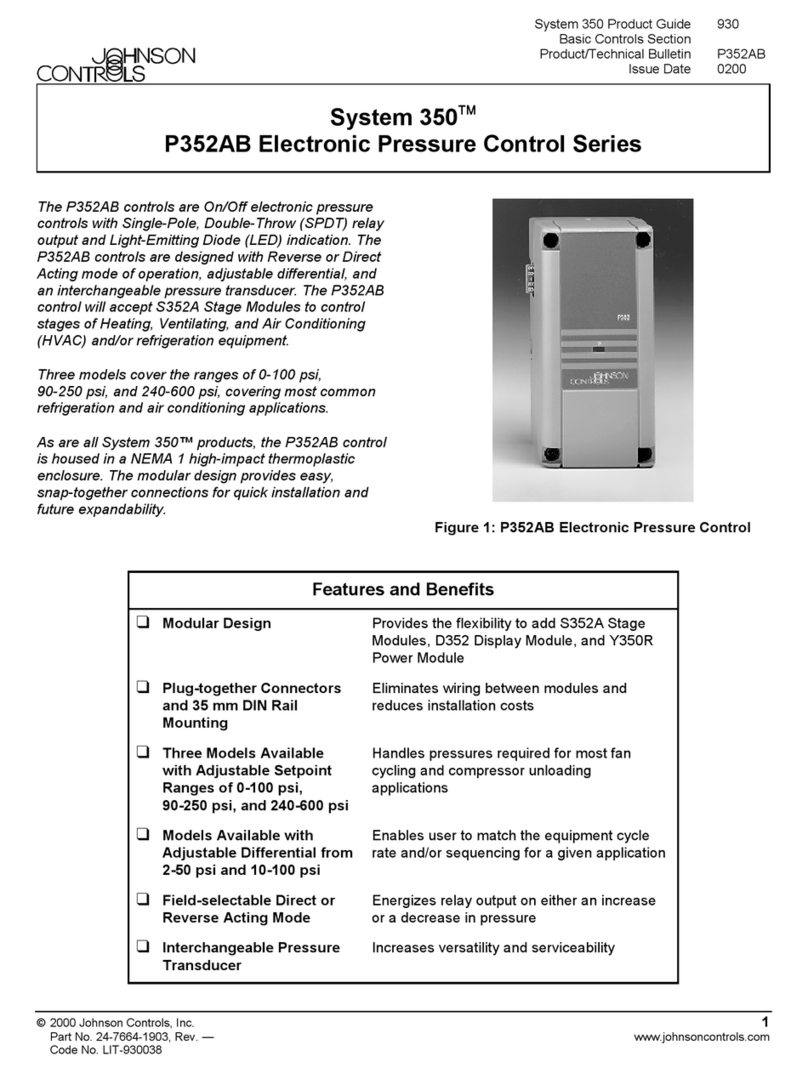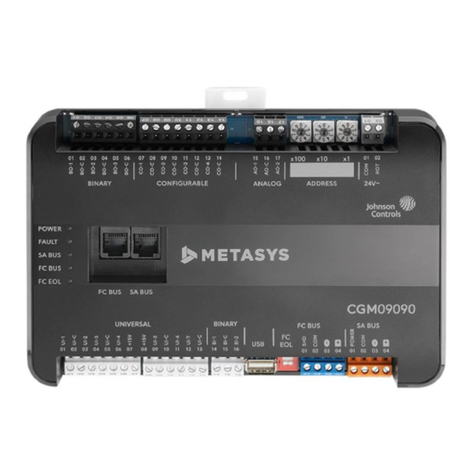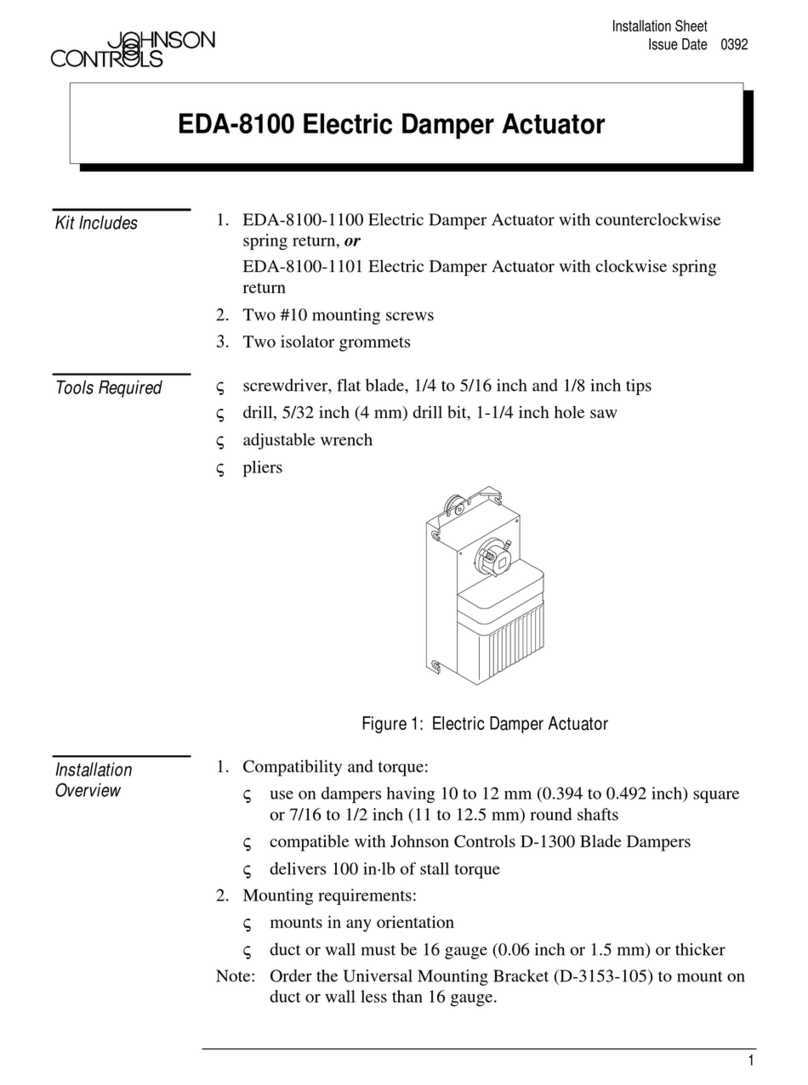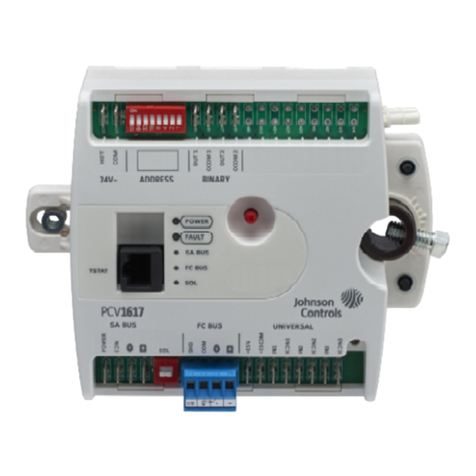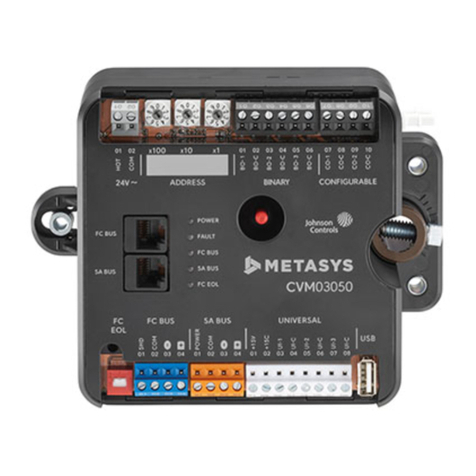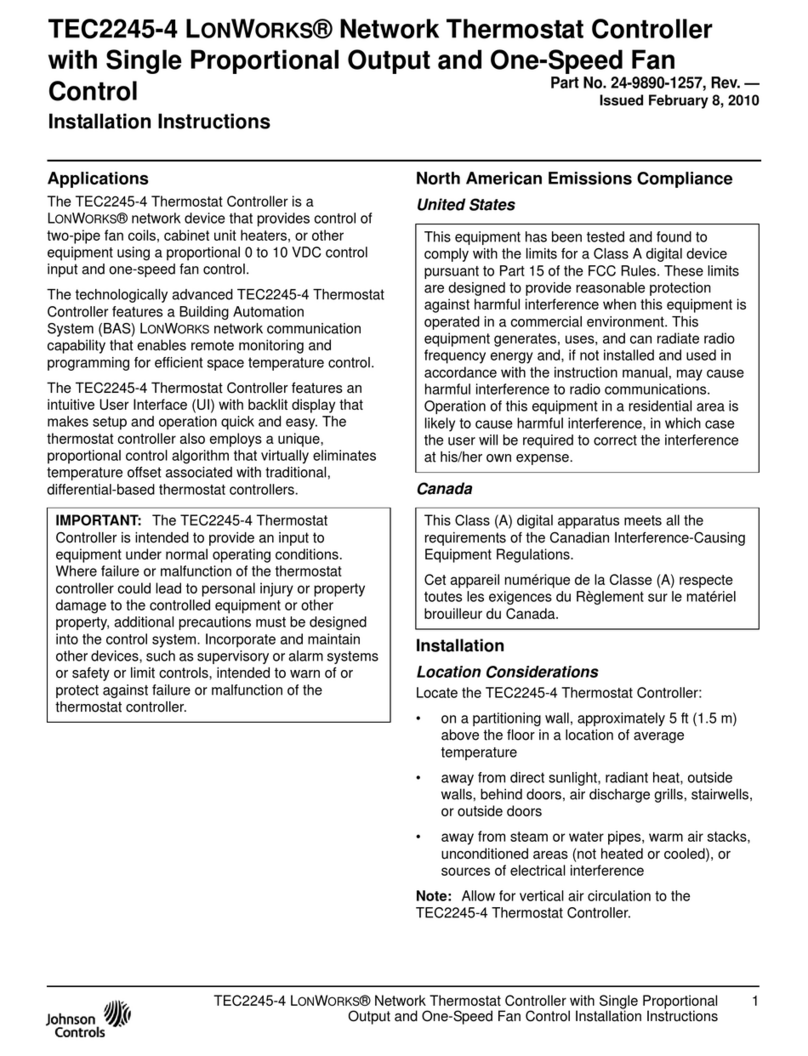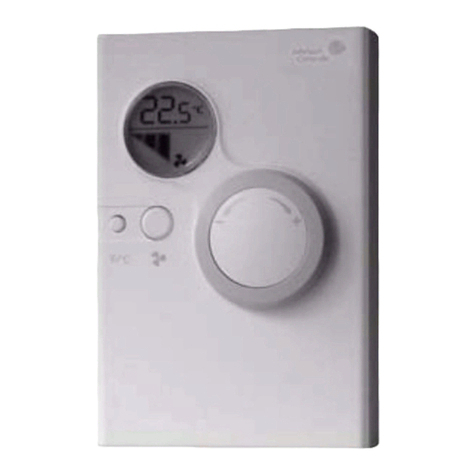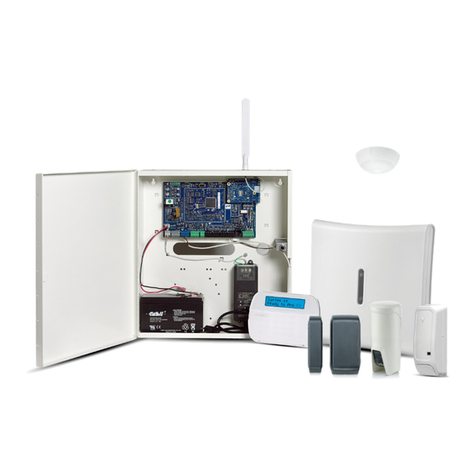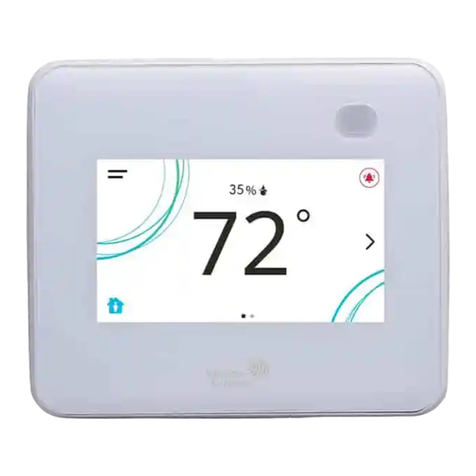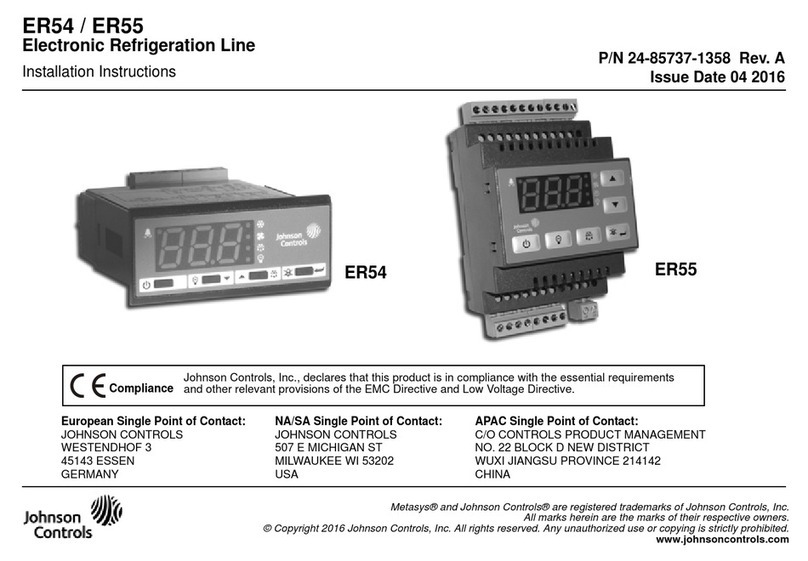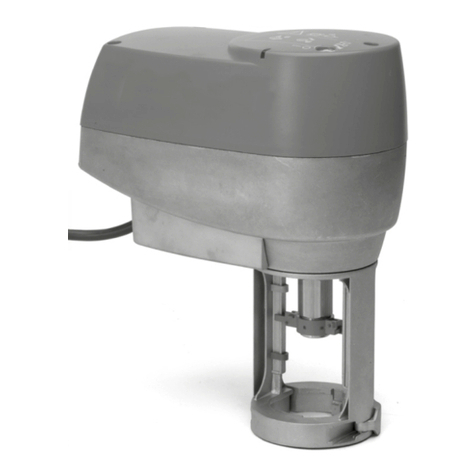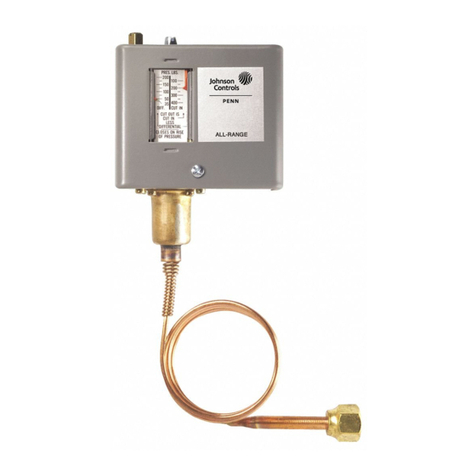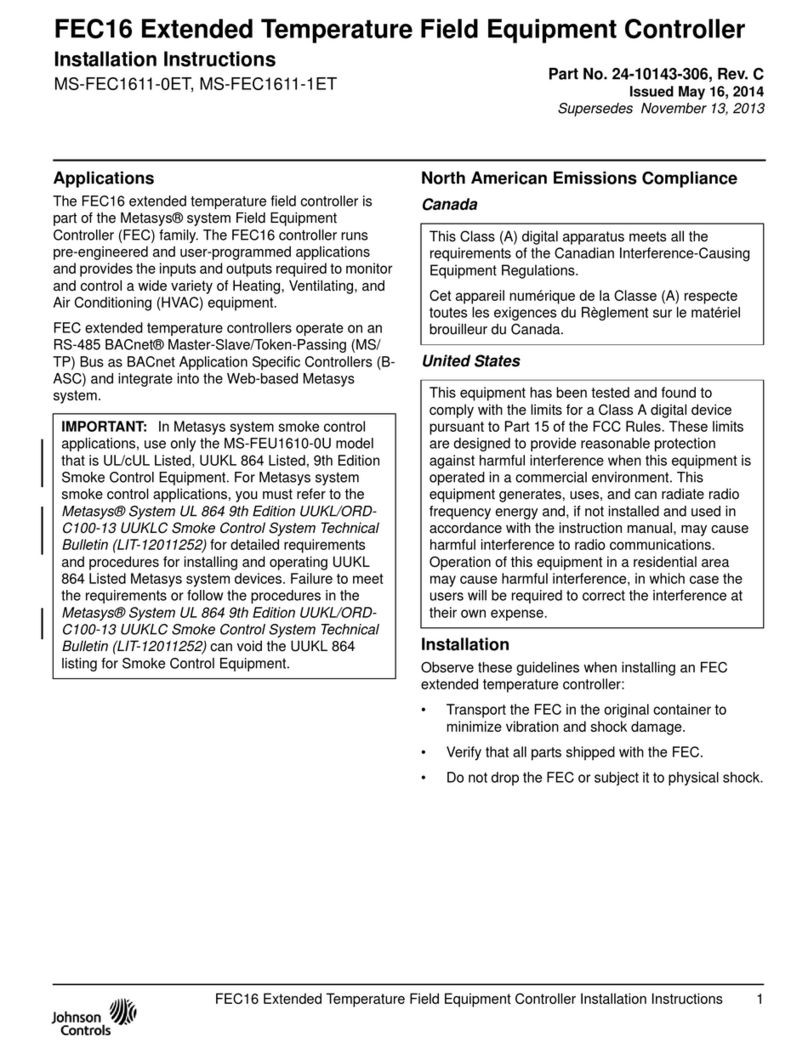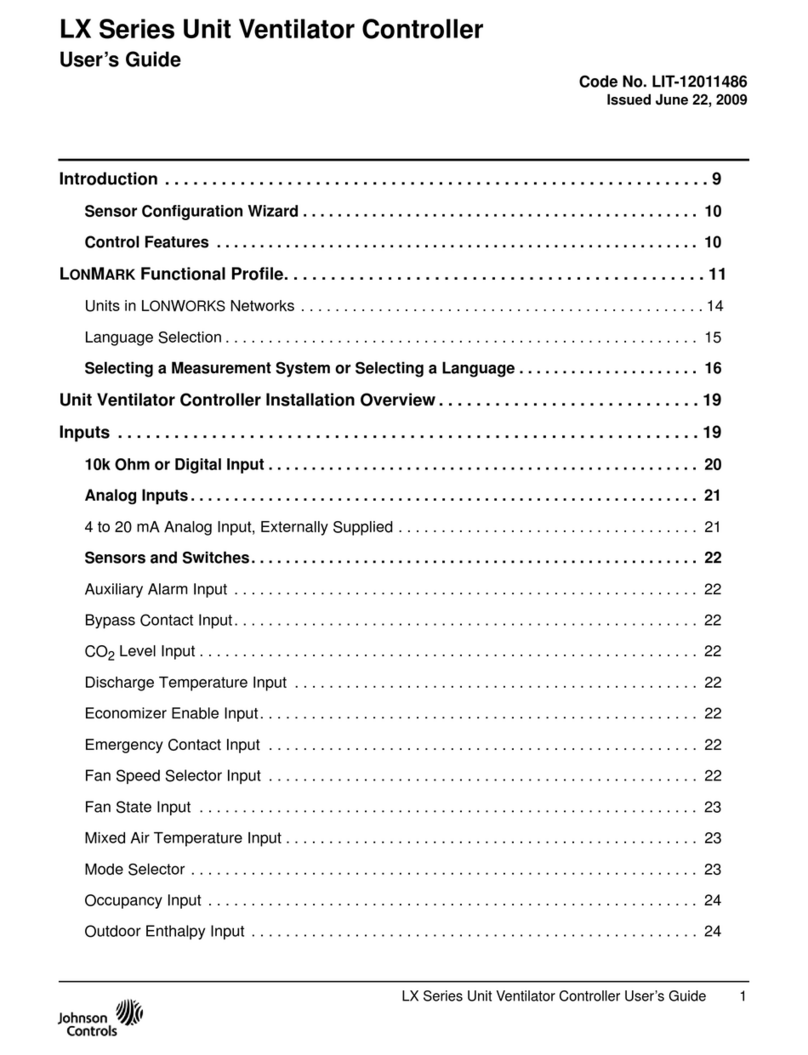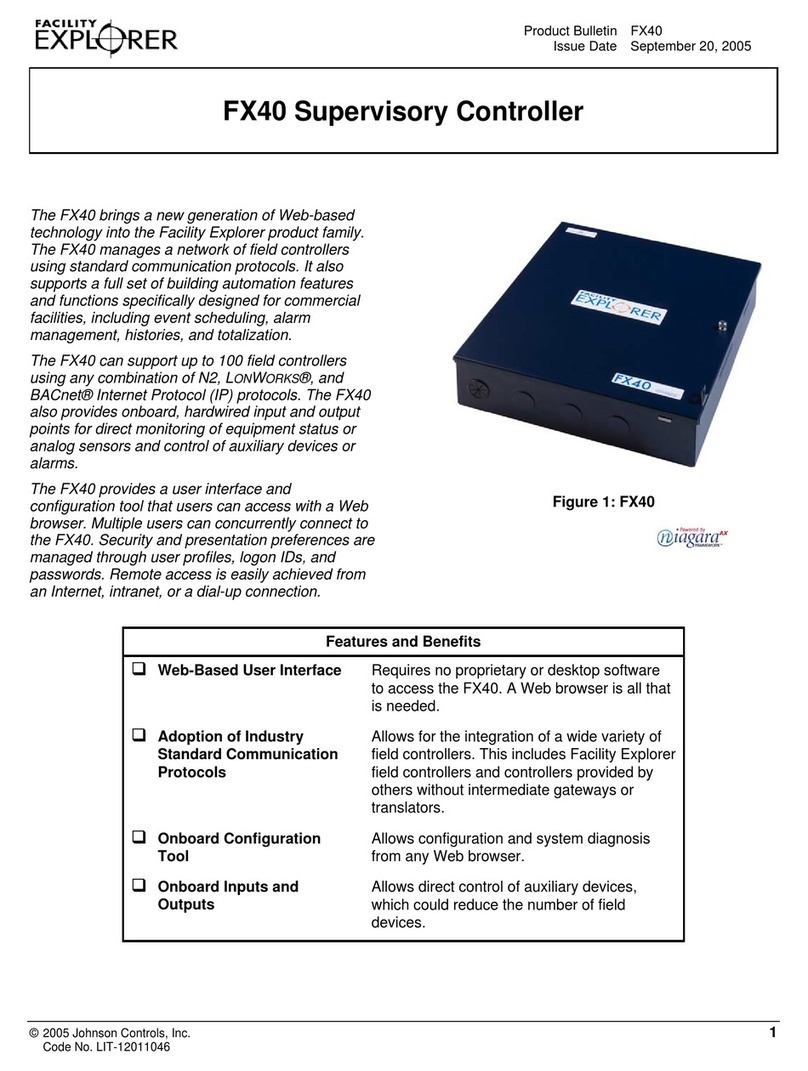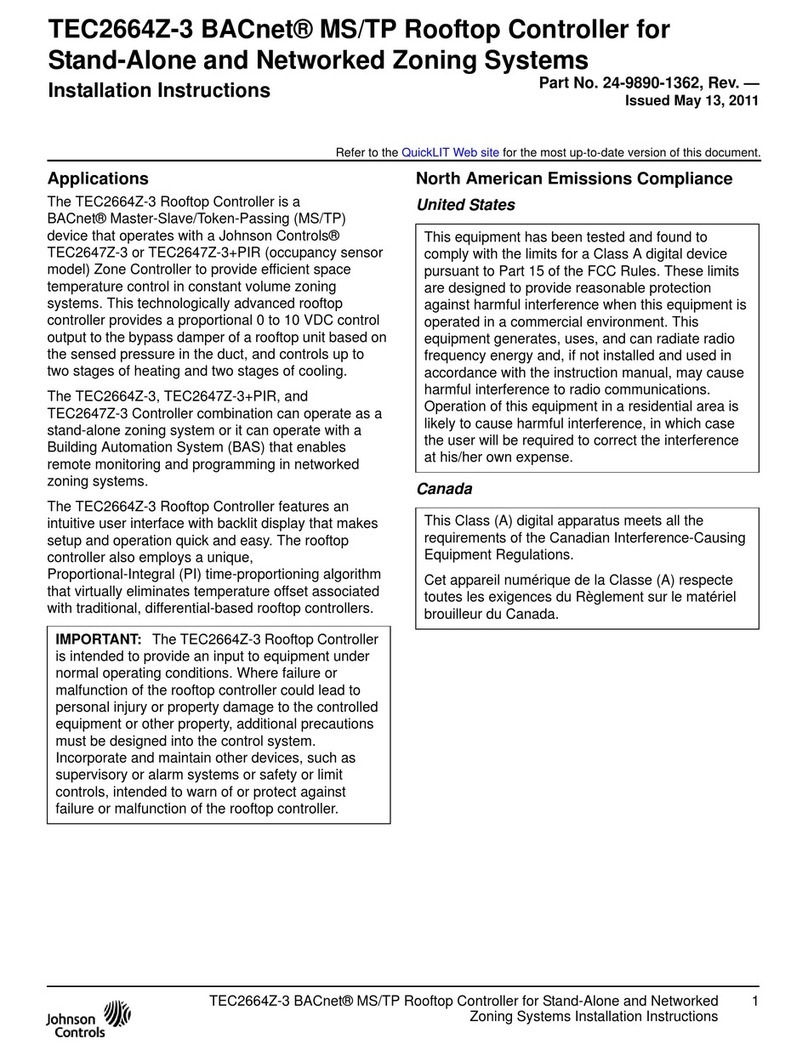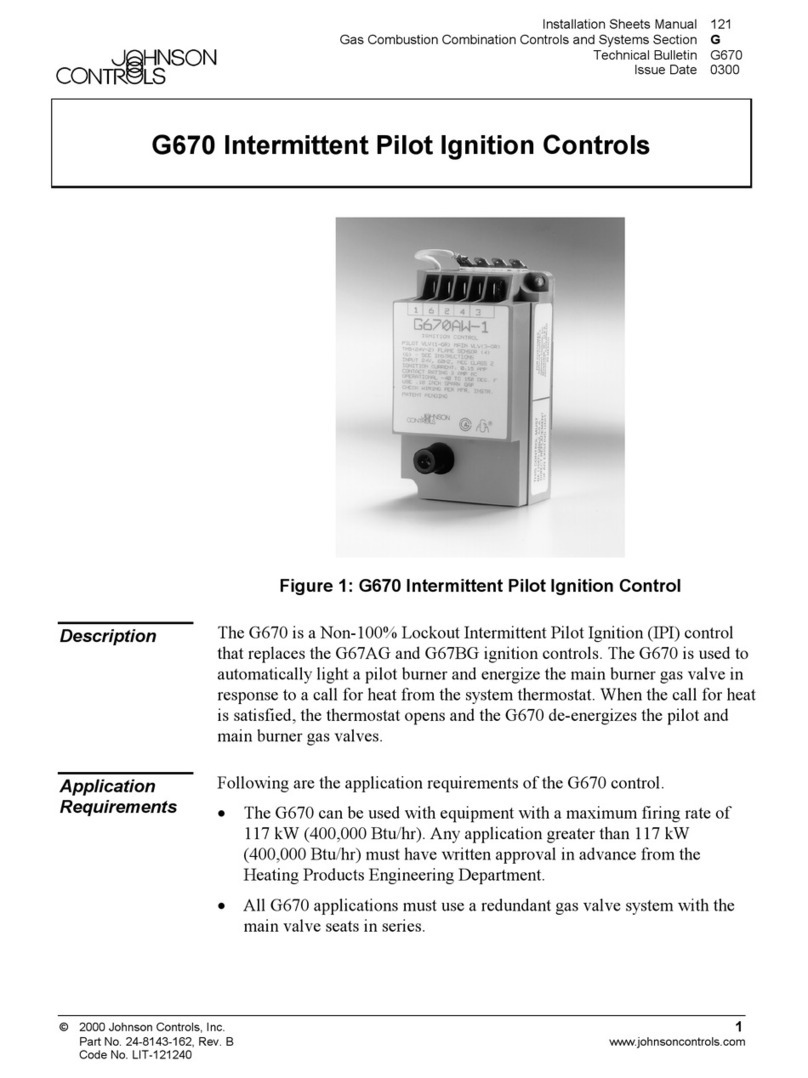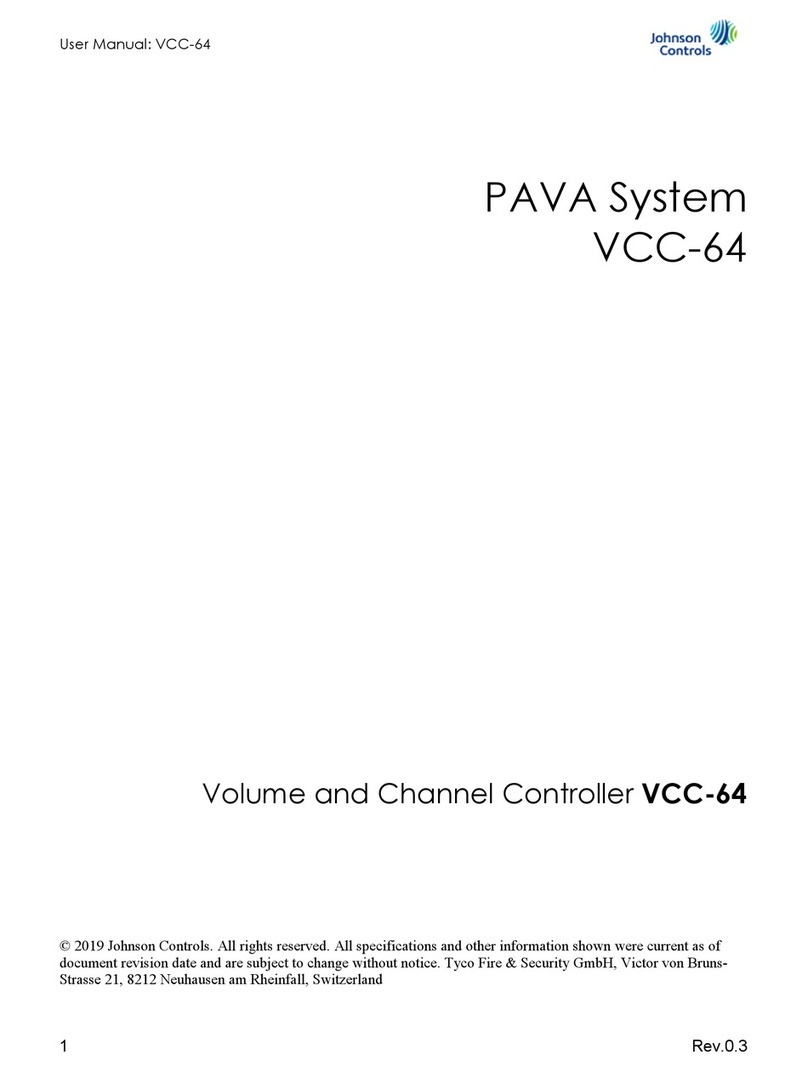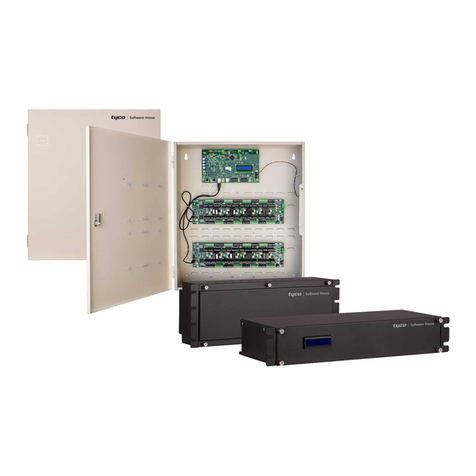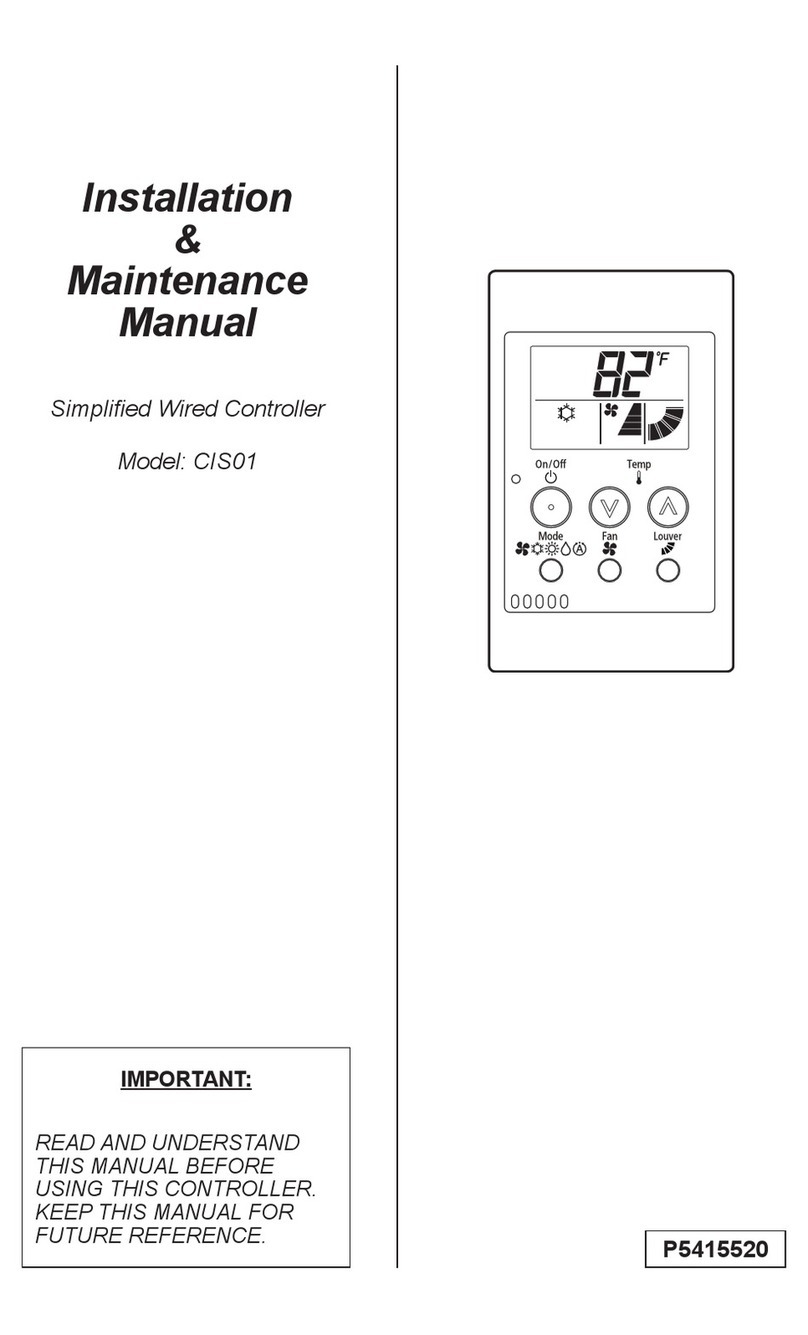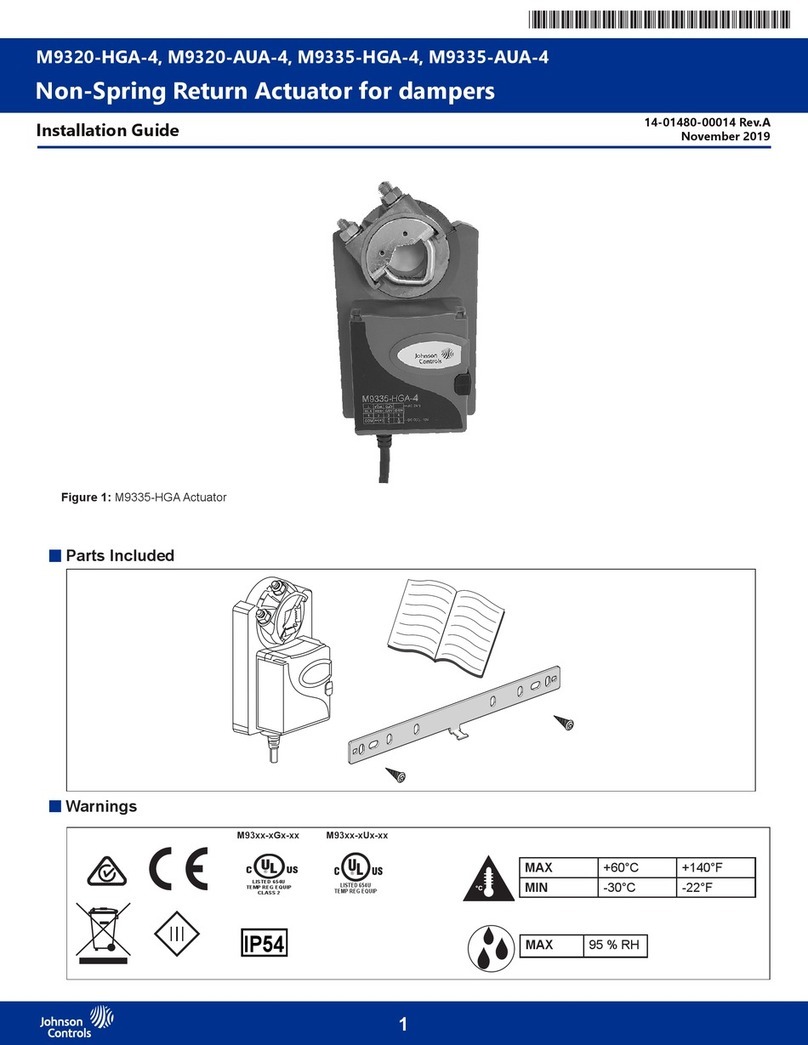
10 EDA-8102 Product/Technical Bulletin
3. Turn only the potentiometers identified in
Figure 22 to the following positions:
R35 fully counterclockwise
R39 fully clockwise
4. Verify that wiring is complete and apply 24 VAC to
terminals AC (TB1) and COM (TB1).
5. Apply the minimum (direct acting) or maximum
(reverse acting) input current to the actuator to
terminals AUXIN (TB2) and COM (TB1). The
actuator will rotate fully counterclockwise and stop
when it reaches the electrical end stop.
6. Turn R39 counterclockwise until the actuator starts
to rotate clockwise.
7. After the actuator stops moving, turn R39
clockwise in very small increments until the
actuator reaches the electrical end stop.
8. Apply the maximum (direct acting) or minimum
(reverse acting) input current to the actuator to
terminals AUXIN (TB2) and COM (TB1). The
actuator will rotate fully clockwise and stop when it
reaches the electrical end stop.
9. Turn R35 clockwise until the actuator starts to
rotate counterclockwise.
10. After the actuator stops moving, turn R35
counterclockwise in very small increments until the
actuator reaches the electrical end stop.
11. Verify that the actuator is working properly by
varying the input current throughout the entire
range and allowing the actuator to complete at
least one cycle. Minor adjustments of R35 and
R39 may be necessary.
12. Install the plastic cover and procedure is
completed.
Slidewire
This procedure is performed only if the desired action
is to change the control input signal to a slidewire
control input signal.
Note: Slidewire input should not be used in high
noise environments or with long cable lengths.
Note: This procedure does not change the electrical
end of stroke limits.
1. Verify that power is turned off.
Common
24 VAC
AC
COM IN
+15
+1
AUXIN
TB1
TB2
V
W1
Figure 24: Slidewire Connection
2. Verify jumper W1 is set to the
V
position as shown
in Figure 24.
3. Turn only the potentiometers identified in
Figure 22 to the following positions:
R35 fully counterclockwise
R39 fully clockwise
4. Verify that wiring is complete and apply 24 VAC to
terminals AC and COM (TB1).
5. Apply the minimum (direct acting) or maximum
(reverse acting) input resistance to the actuator.
The actuator will rotate fully counterclockwise and
stop when it reaches the electrical end stop.
6. Turn R39 counterclockwise until the actuator starts
to rotate clockwise.
7. After the actuator stops moving, turn R39
clockwise in very small increments until the
actuator returns to the electrical end stop.
8. Apply the maximum (direct acting) or minimum
(reverse acting) input resistance to the actuator.
The actuator will rotate fully clockwise and stop
when it reaches the electrical end stop.
9. Turn R35 clockwise until the actuator starts to
rotate counterclockwise.
10. After the actuator stops moving, turn R35
counterclockwise in very small increments until the
actuator returns to the electrical end stop.
11. Verify that the actuator is working properly by
varying the input resistance throughout the entire
range and allowing the actuator to complete at
least one cycle. Minor adjustments to R35 and
R39 may be necessary.
12. Install the plastic cover and procedure is
completed.
